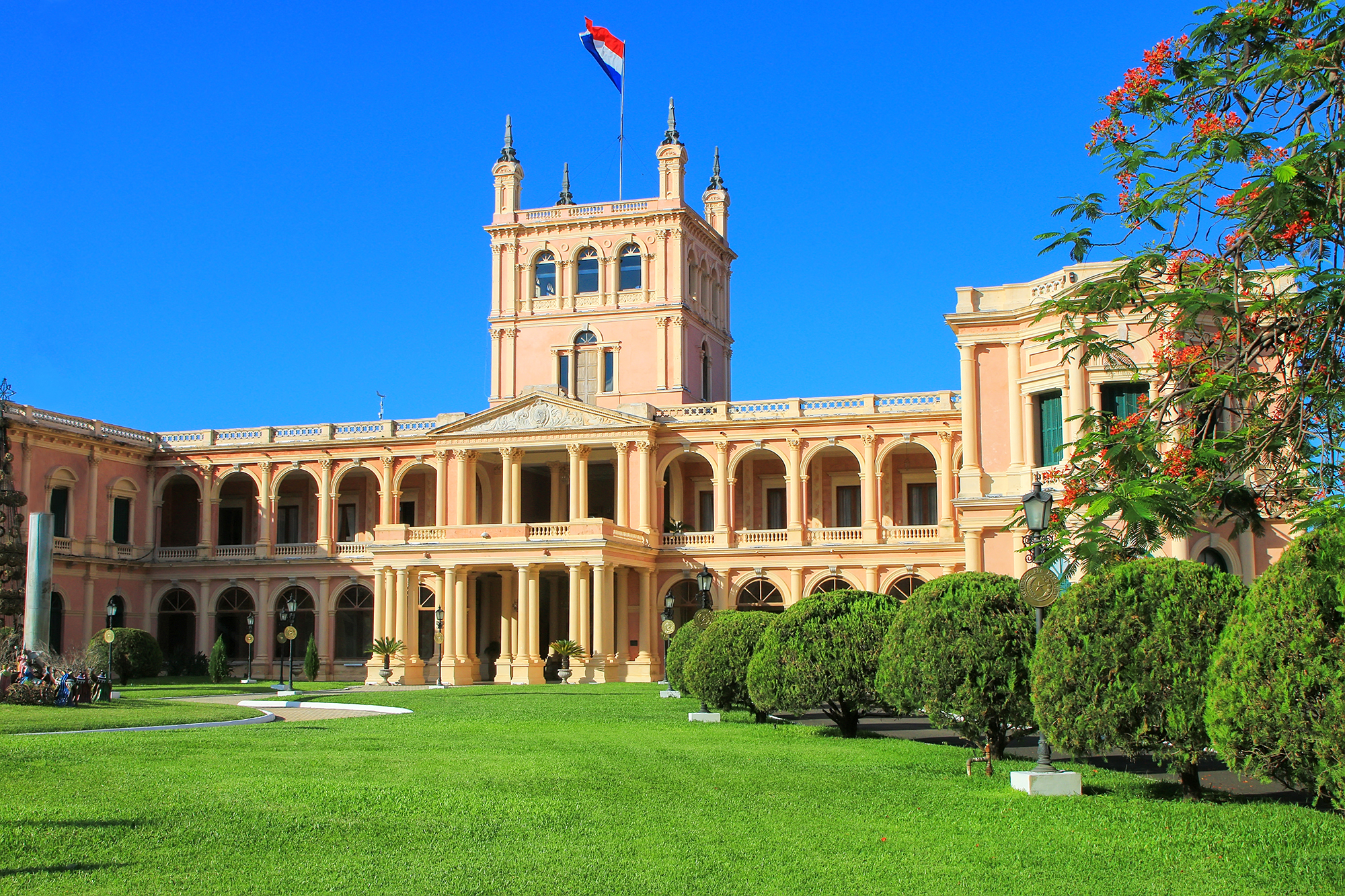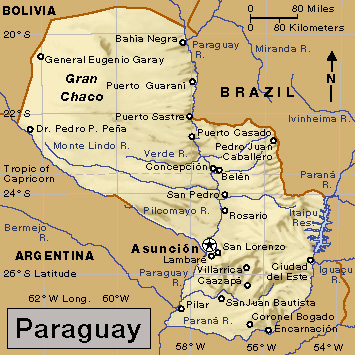Asunción, << `ah` soon SYAWN >> (pop. 526,408), is the capital, largest city, and chief port of Paraguay. It is in central Paraguay, on a bay of the Paraguay River, near Argentina’s northeastern border.

Downtown Asunción consists of rectangular blocks in which older, lower buildings stand alongside modern skyscrapers. Treelined plazas provide relief from the hot sun and busy streets. The Pantheon of Heroes, which honors Paraguay’s war heroes, is on the Plaza of Heroes, one of Asunción’s main plazas. Nearer the river are the Metropolitan Cathedral; the Government Palace, also known as the Palace of López, which houses the Paraguayan president’s office; and the National Congress building. One of the few remaining buildings from Spanish colonial times is the House of Independence, where Paraguayan nationalists plotted their independence in 1811. There are many buildings from the late 1800’s and the early 1900’s. The ornate central post office dates from about 1900.

Modern homes have replaced most Spanish-style houses in and around Asunción. The city has some slums on the banks of the Paraguay River. Most of Asunción’s residents are of mixed European and indigenous (native) ancestry. Most also speak both Spanish and Guaraní, an indigenous language.

Asunción’s chief industries include the processing of such agricultural and forest products as soya, sugar, and wood for export; and the production of food products, footwear, and textiles. Many people also work in commerce, for the national government, and as vendors and artisans in the informal economy that exists outside government control and taxation structures.
The Spanish founded Asunción in 1537. The city became the seat of government for all of Spain’s territory in southeastern South America and remained so until 1617. Asunción has been Paraguay’s capital since the nation gained independence in 1811.
